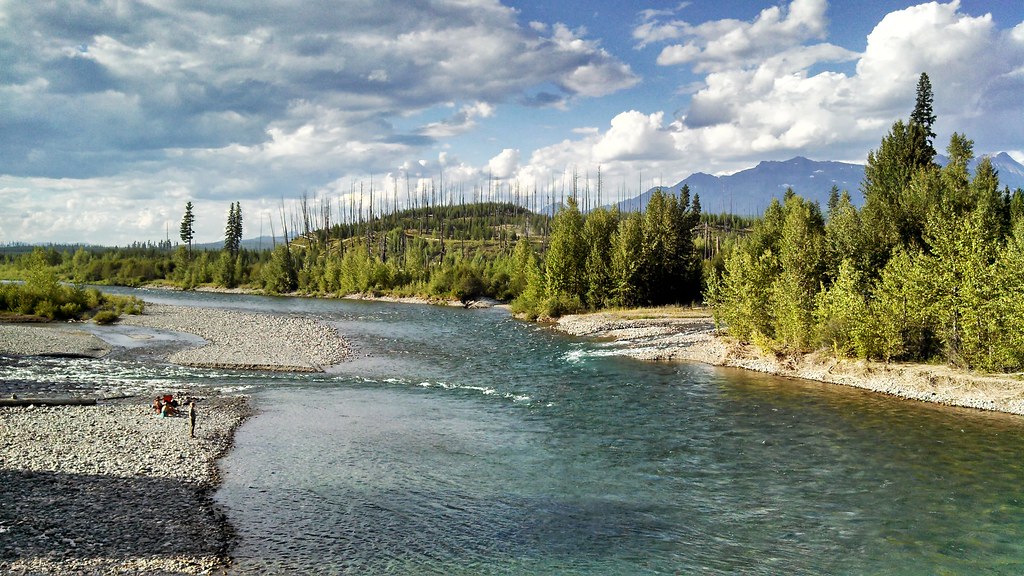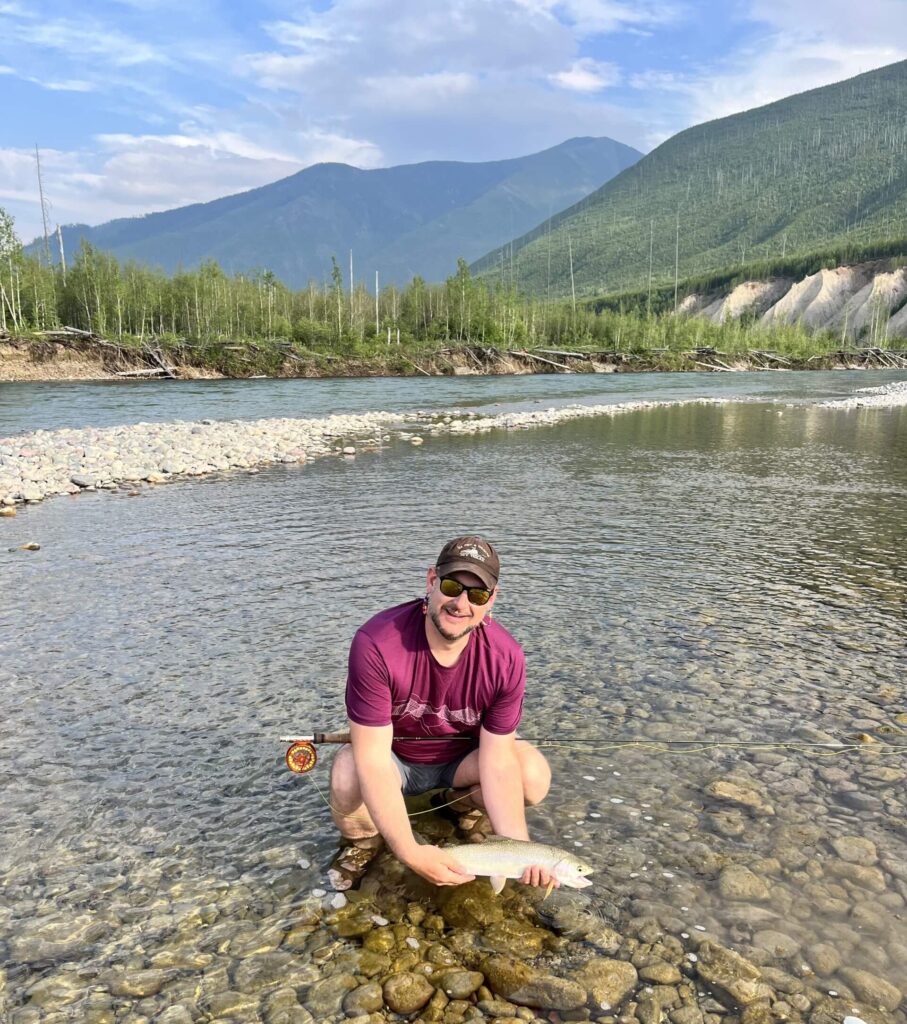
A Float Trip Worth Every Moment
Back in June 2023, my job as a Refuge Manager with the U.S. Fish and Wildlife Service sent me to Missoula, MT for a week of Wilderness Leadership Training. Part of the training included a three-day float trip with a local outfitter Glacier Guides Inc. on the North Fork Flathead River. When the outfitter suggested there would be opportunities to cast for Westslope Cutthroat trout along the Western border of Glacier National Park, I started thinking about adding a new Cutthroat subspecies to my list of native trout. In the weeks leading up to my departure, I debated whether I would bother to pack my fishing gear for a work trip. Ultimately, I decided I could get by with a small fly box, wet wading in my Chacos, and bringing along a pack rod. Boy am I glad I did!
Back in 2019, Tim gifted me one of his custom-made fly rods for my birthday. That rod, a beautiful seven-piece 5-weight, packs down to less than eighteen inches – perfect for travel, backpacking, and “work trips” like this one! Sometimes we joke that this rod “only catches big fish.” It earned its mythical prowess on the Cherokee reservation in the Smoky Mountains of North Carolina. The very first fish I caught was a fat, 20-inch rainbow that launched itself from the depths at an elk hair caddis. Fishing with it on Montana’s Flathead River resulted in my largest ever cutthroat – another 20-inch beauty. Continue reading to see why the Wild and Scenic Flathead River is a special place for wilderness enthusiasts.
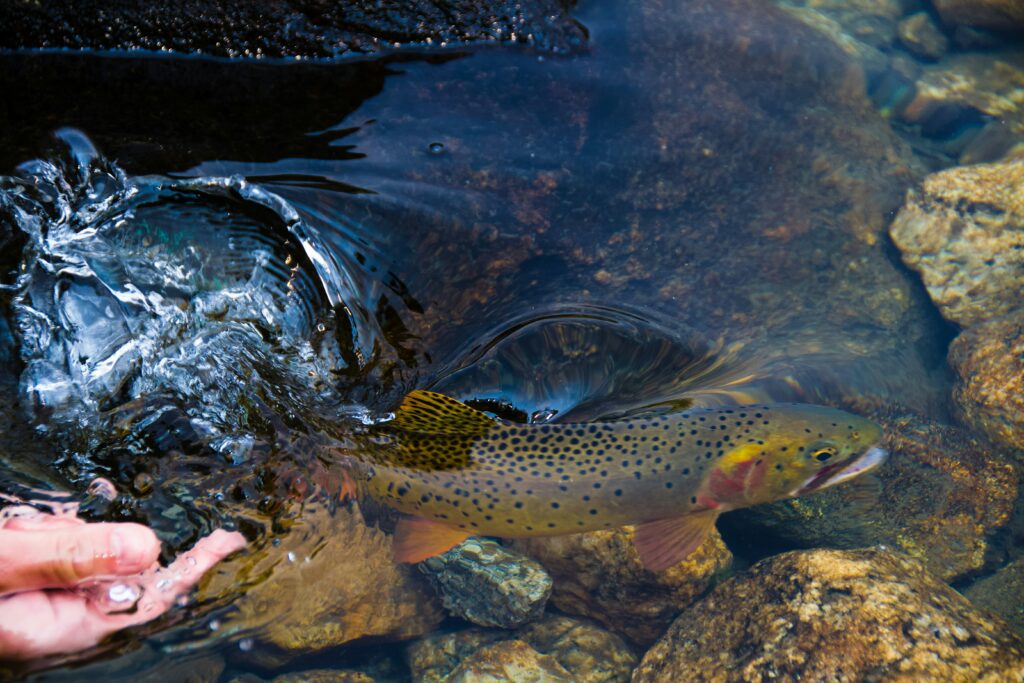
The North Fork Flathead River
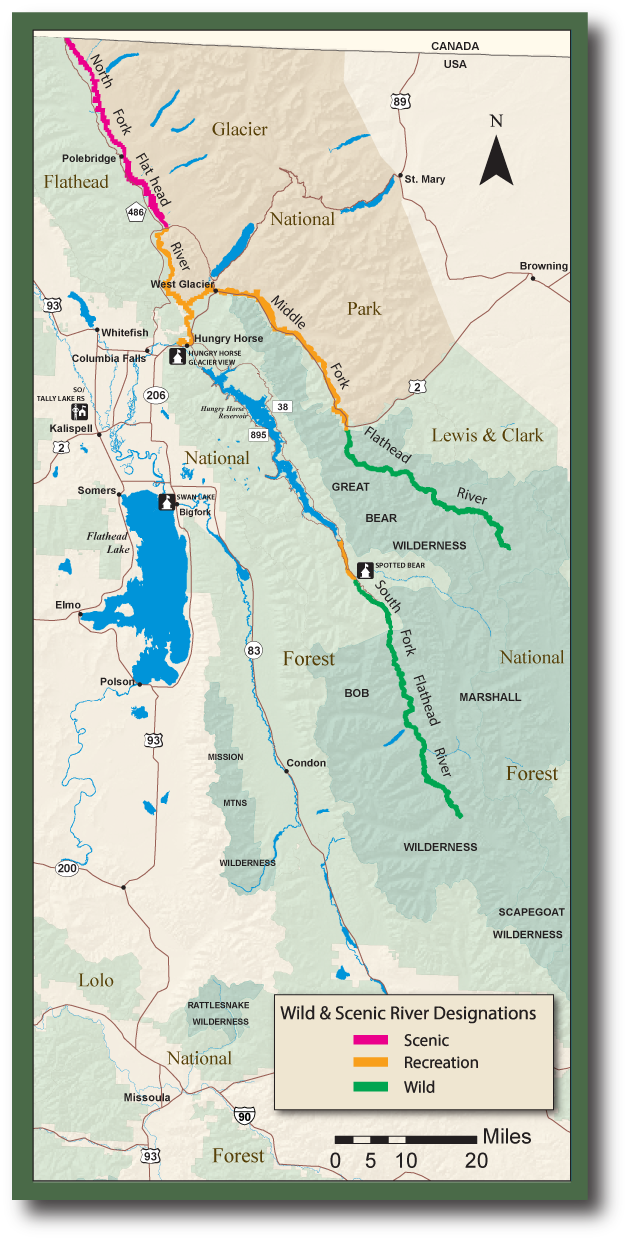
The North Fork Flathead River is unique in many ways. It flows into Montana from headwaters in the Canadian Rockies. From the U.S./Canadian border, it can be floated for 70 miles to Blankenship Bridge where it joins the Middle Fork Flathead. Throughout its course, the North Fork Flathead supports populations of two native trout species – Westslope Cutthroat and Bull Trout. There aren’t many places left in the lower 48 where you have access to 70 miles of undammed trout water, but the Flathead delivers.
The Flathead is also one of three rivers in Montana that are part of the National Wild and Scenic Rivers System.
For its entire length, the North Fork Flathead forms the border between the Flathead National Forest and Glacier National Park. The Flathead river’s three forks flow through one of the largest intact ecosystems in the lower 48, making it a great place for wildlife viewing.
Floating the North Fork Flathead River
Floating the North Fork of the Flathead River does not require a permit. If you are thinking about floating it on your own, take time to familiarize yourself with the regulations or contact the Hungry Horse Ranger District for more information. There are several commercial outfitters who provide guided trip on the North Fork Flathead. We teamed up with Glacier Guides and Montana Raft, an official concessioner for Glacier National Park since 1983. Their approach to guiding in sensitive backcountry showed through during every moment of our multiday float. We put in near Ford Creek and ended at the Glacier Rim landing, but visitors can choose many different day trips or overnights to float and fish this beautiful river.
If you don’t want to hire a guide for a trip, I can’t tell you much more than what you can find searching other sites for information. I will say that wading and shore fishing is nearly impossible unless you access banks from a raft or drift boat. Steep slopes, deep eddies and bends, and long bushwhacks from any access point would stand in your way from simply driving up North Fork Road and walking in with your gear. The float plan, however, can be pretty tame and approachable for novice paddlers. There are no major rapids from Ford until Glacier Northern Flats, and eddying out at some promising gravel bars may be your only challenge of the day. Due to water levels across many shallow bars can be tough for some boats, but inflatable rafts, packrafts, or inflatable kayaks will ride high and give you what you need to pole through or wade and tug the low spots. If canoeing is your thing, it better really be your thing because of the swirling currents and difficulty keeping a canoe pointed where you want it in the flow.
One day-long float I heard is good is between Polebridge and Glacier Rim. Putting in at Polebridge means an opportunity to stock up on huckleberry bearclaws at Polebridge Mercantile for your day, and facing about 12-13 river miles of float. Be sure you have a vehicle with some good shocks and clearance because the road up can be washboards at best, and deeply rutted and potholed at worst.

Fly-Fishing the North Fork Flathead River
On the North and Middle Forks of the Flathead River, you can find crystal clear blue-green waters host to outstanding fishing opportunities. The bonus to both rivers is that Glacier National Park and the Flathead National Forest become the backdrop of federal public lands ready for exploration. If the crowds and packed roadways of Glacier National Park aren’t your thing, fishing the quiet waters of the North Fork should be on your short list. These waters are also home to the Westslope Cutthroat–a Montana Species of Concern–and the infamous Bull Trout, which maintains Threatened status under the U.S. Endangered Species Act. If you spend enough time fishing this waterway you might also hook into whitefish, rainbow and brook trout!
The Middle Fork and North Fork of the Flathead River form borders for Glacier National Park, and are deservingly part of the National Wild and Scenic Rivers System. If you decide to take a break from putting a bend in your rod, the views are spectacular! I’d recommend a dry-dry rig for the most explosive takes, but I put plenty of smaller fish in my net with a dry-dropper setup. In the late afternoon I had good luck fishing right from shore 5-10 feet from my toes with just a rubberlegs, but mornings and midday were perfect for #12/14 Stimulators trailing a smaller “whatever is flying into my ears” fly.
The best fish of the trip (bottom right) came to hand on a stimulator tossed into a deep bend. Not sure if anything was there, I had to trust my knowledge and chuck a dry between fast and slow seams to watch a huge flash and light sipper of a take at the surface. The fight was great, with many runs into the deep current followed by a few cartwheels into my hands.
That story aside, I have to admit that before I left I read up on the river and saw many websites tell me that “the cold, low-nutrient waters” would make fishing pretty “spotty”. Well, whoever wrote that up was trying to hide a great fishing experience from everyone! Smaller fish in the 8-12 range aren’t uncommon, and so I’d be sure you have plenty of caddis and mayfly imitations at the ready. Big fish are definitely in the water, and I would never hesitate at another chance to toss flies at fish in the North Fork.
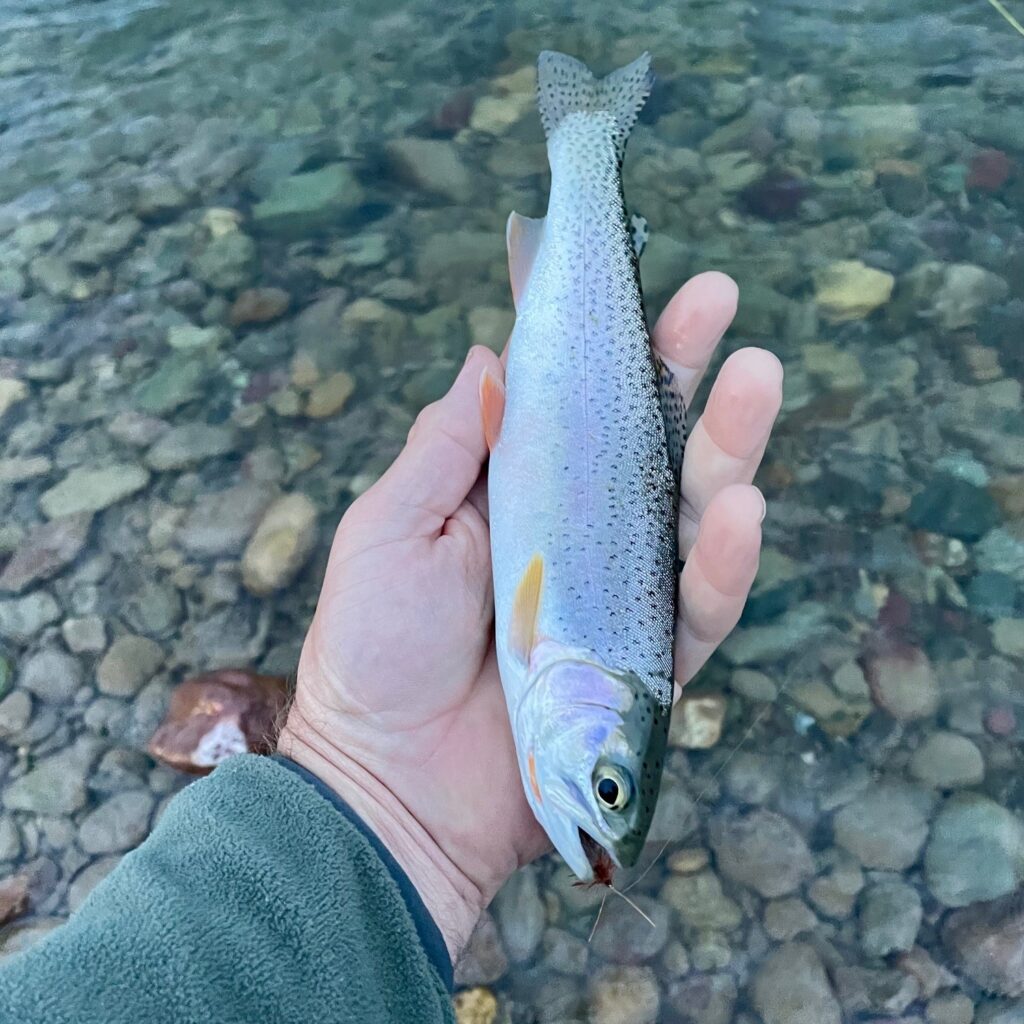

Camping Along the North Fork Flathead River

Admittedly I had to leave all of the camping to the guide service for my trip. They handled site selection, setting up camp, cooking our dinners and breakfast, and putting out the honey bucket for our toilet. What a privileged experience that was! (And one that I don’t know I’ll ever get again)
That said, there are many gravel bars and other quick places to eddy out of the river and to a place to pop a tent for anyone coming out for a float on their own. The best advice is to do the dispersed camping the many National Forest visitors have come to expect on the west bank of the river during your float. By doing so you can be more certain your camp is within the National Forest and not the National Park–no dispersed camping is allowed within Glacier National Park along the river. Be sure to check maps before you go, check regulations, and be 100 percent sure you’re not on private land. If you aren’t familiar with Leave No Trace processes for camping, get up to speed and be sure to treat our pubic lands with the respect they deserve.
As with any camping in this region you will want to be bear aware. The Flathead National Forest is home to both grizzly (brown) and black bears. Bears start emerging from their dens in March, and so when the river levels are down and fishable you’re in the heart of their foraging season. Read more about bear safety in this area on the U.S. Forest Service’s website. Mountain Lions can also be present, so become familiar with how to stay safe from these amazing apex predators during your visit. Report all bear and mountain lion sightings or encounters to the nearest ranger, campground host, or visitor center, or by calling (406) 888-7800.
For camping information in Flathead National Forest, visit Flathead National Forest – Camping & Cabins:Campground Camping (usda.gov)
For Glacier National Park camping information, visit Camping – Glacier National Park (U.S. National Park Service) (nps.gov)
